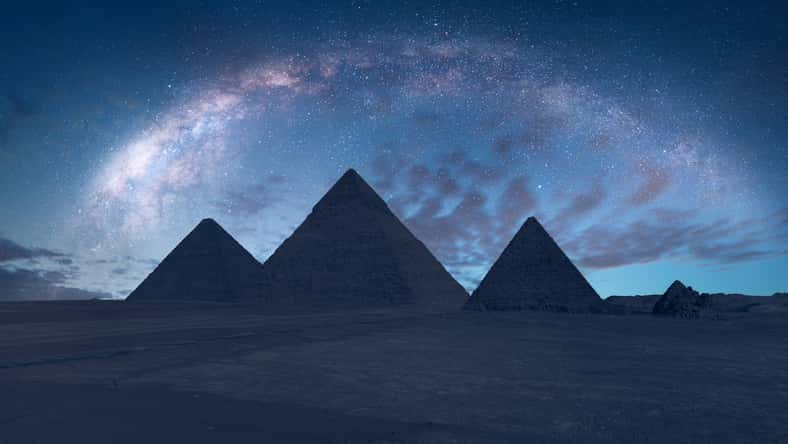Ancient Egyptians Decorated Tombs With Paintings Of The Milky Way, Indicating A Link With Their Sky Goddess

Ancient Egyptian coffins and tombs decorated with starry paintings indicate that the sky goddess Nut was linked to the Milky Way galaxy.
For a long time, Egyptologists have believed that Nut was connected to the Milky Way, and this new study finally helps confirm the theory.
Nut symbolizes the heavens and the cycle of life and death. In Egyptian mythology, she was said to devour the sun each evening and give birth to it at dawn.
Or Graur, an associate professor of astrophysics at the University of Portsmouth in the United Kingdom, analyzed 125 depictions of the goddess Nut on 555 coffins and tomb walls that are as old as 5,000 years. Some of these paintings showed strange details that are not usually found in Egyptian artwork on coffins.
In many depictions of Nut, the goddess is portrayed with her unclothed body arching over the sky. Sometimes, she has stars and solar disks all over her body. This demonstrates her connection to the sky and how she protects the Earth far below her.
On the coffin of a chantress (a person who performs religious prayers) named Nesitaudjatakhet, who died around 3,000 years ago, there is an image of Nut lying down.
Her body is dotted with stars and divided by a “thick, undulating black curve” that seems to symbolize the Great Rift, which separates the Milky Way into two.
“I think that the undulating curve represents the Milky Way and could be a representation of the Great Rift—the dark band of dust that cuts through the Milky Way’s bright band of diffused light,” said Graur.
Similar waves appear alongside images of Nut in the decorations of four tombs in the Valley of the Kings. The ceiling of Ramesses VI, who ruled from about 1143 to 1136 B.C., has two images of Nut that are separated by thick, golden undulating curves. The curves trail out from the base of Nut’s head, go above her back, and trace around to her rear.

Sign up for Chip Chick’s newsletter and get stories like this delivered to your inbox.
The wavy features show up in the cosmological artwork of Indigenous American cultures as well, such as the Navajo, Hopi, and Zuni.
These undulating waves suggest that Nut is closely tied to the Milky Way. The ancient Egyptians may have believed that this association helped her protect the Earth. Sometimes, Geb, the Egyptian god who embodies the Earth, can be seen underneath Nut in paintings.
Additionally, Nut was associated with all other aspects of the sky at daytime and at night. Graur cautions against equating Nut with the Milky Way. Like the stars and the sun, the Milky Way is just another part of Nut.
The details of the study were published in the Journal of Astronomical History and Heritage.
More About:News





